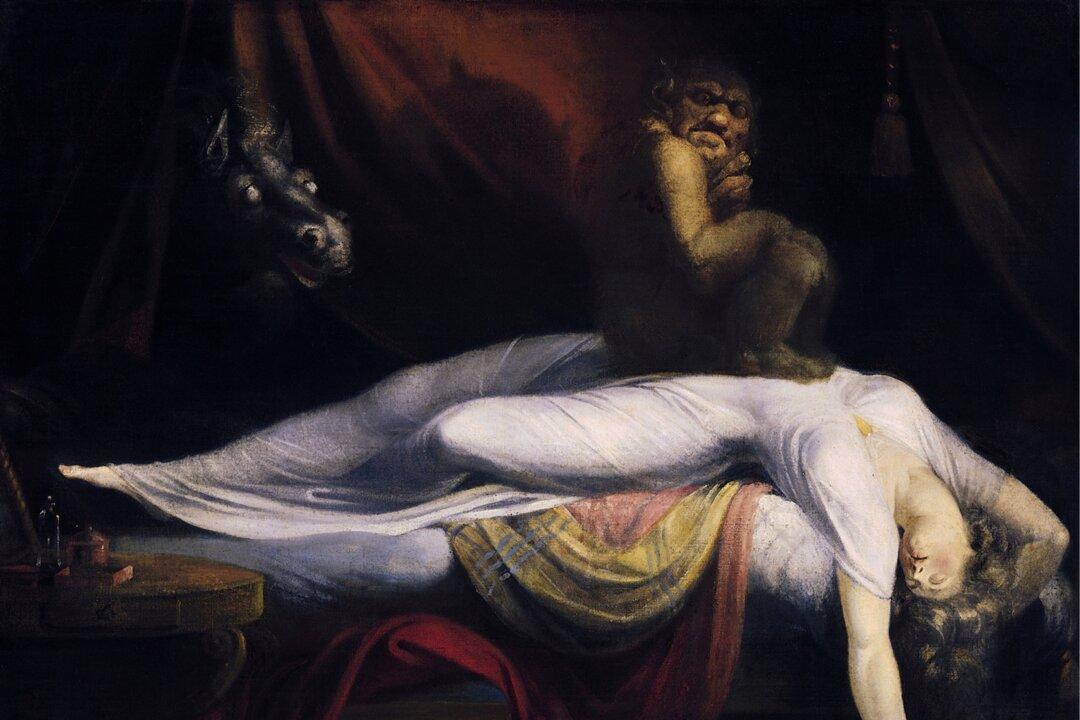A nightmare can be an overwhelming experience. It can be so lucid as to be daunting, even horrific and terrifying. It can cause one to wake in a panic, in cold sweats, and with the heart racing; we awaken relieved that it was “only a dream.”
John Henry Fuseli, an 18th-century German Romantic painter, attempted to capture the atmosphere of the nightmare in his 1781 painting with that very name. His “The Nightmare” was exhibited at the Royal Academy in London in 1782 and created quite a stir.





